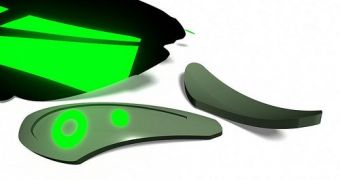A team of researchers from the School of Chemical & Biomolecular Engineering at the Georgia Institute of Technology, used components from common liquid crystal display (LCD) projectors to control the brain and muscles of freely moving worms.
They genetically engineered light-sensitive microbial proteins into the worms, that could be activated by red, green and blue lights from a projector, so that they could turn on and off the worms' neurons and muscles.
Using LCD technology to control small animals is a serious advantage in the field of optogenetics – a mix of optical and genetic techniques that has allowed researchers unprecedented control over brain circuits in laboratory animals.
But until now, this technique could only be used with larger animals, by placing an optical fiber into their brain, or demanded the illumination of the animal's whole body.
Hang Lu, an associate professor in the School of Chemical & Biomolecular Engineering at the Georgia Institute of Technology, explained that “this illumination instrument significantly enhances our ability to control.”
The prototype system that Lu and her team built, allowed them to explore the “touch” circuit of the worm Caenorhabditis elegans, by stimulating and inhibiting its mechanosensory and locomotion neurons.
The optogenetic reagents for the Georgia Tech experiments were provided by Alexander Gottschalk, a professor in the Johann Wolfgang Goethe-University Frankfurt Institute of Biochemistry in Frankfurt, Germany, and his team.
In the first experiment, the scientists illuminated the head of a worm at regular intervals, as the animal moved forward, and this caused a coiling effect in the head and caused the worm to crawl in a triangular pattern.
In a second experiment, the researchers scanned light along the bodies of worms from head to tail, and observed a backward movement when neurons near the head were stimulated and a forward movement when neurons near the tail were stimulated.
Other experiments concluded that the intensity of the light affects worms' behavior, and that in order to understand circuit functions, several optogenetic reagents excited at different wavelengths could be combined in one experiment.
The illumination system used in this research included a modified off-the-shelf LCD projector, necessary to cast a multi-color pattern of light onto the animals, while the independent red, green and blue channels allowed researchers to activate excitable cells sensitive to specific colors, while simultaneously silencing others.
Lu explained that “because the central component of the illumination system is a commercially available projector, the system’s cost and complexity are dramatically reduced, which we hope will enable wider adoption of this tool by the research community.”
Connecting the illumination system to a microscope and combining it with video tracking, allowed the researchers to track and record the behavior of freely moving worms, while maintaining the lighting on a certain body area.
As the animal moves, the changes in the light’s location, intensity and color can be updated in less than 40 milliseconds.
The researchers did not limit their experiments to worms, they managed to examine more animals, under many circumstances, thus proving that the results of this technique were solid and repeatable.
“This instrument allowed us to control defined events in defined locations at defined times in an intact biological system, allowing us to dissect animal functional circuits with greater precision and nuance,” said Lu.
“Experiments with this illumination system yield quantitative behavior data that cannot be obtained by manual touch assays, laser cell ablation, or genetic manipulation of neurotransmitters,” she added.
Lu and graduate students Jeffrey Stirman and Matthew Crane had the support of the National Institutes of Health and the Alfred P. Sloan Foundation, for developing this tool.
They described their experiments in a paper published in the advance online edition of the journal Nature Methods.

 14 DAY TRIAL //
14 DAY TRIAL //